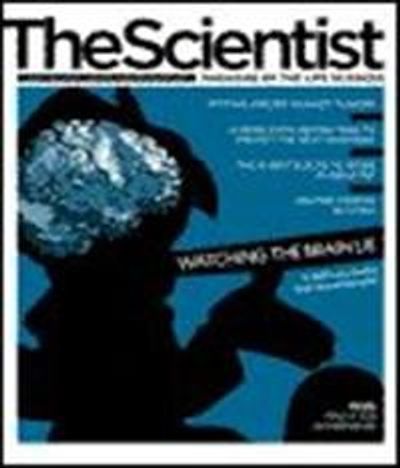
Auxin does it all in plants. The hormone is absolutely pervasive in plant biology, regulating aspects of cell growth, division, and specialization. Charles Darwin and his son Francis noted its influence on the bending of plants toward light in 1880. Despite years of interest in how auxin (or indole-3-acetic acid, which was discovered in the 1930s) signaling works, the hormone has held its molecular secrets tightly. ?Plants have been tricky biochemically to deal with,? says Richard Napier, from University of Warwick. ?Until a couple of years ago there were almost no auxin receptors known.?
In the Hot Papers featured here, two labs identified an auxin receptor in Arabidopsis ? one that had been hiding in plain sight for a number of years. In back-to-back papers, Mark Estelle?s...
Breaking an Animal Paradigm
?The auxin story has been very difficult to understand,? says Leyser, ?because it?s one simple molecule and yet appears to have dozens of different effects.? Auxin affects tropisms to light and gravity. It can affect cell elongation or cell division depending on the tissue. Auxin also acts as a morphogen during embryogenesis and causes rapid changes in gene expression.
In the 1980s, the goal was to untangle auxin?s complexity through identifying Arabidopsis auxin mutants. TIR1 was identified in such a genetic screen in the 1990s and quickly recognized as an F-box protein ? a conserved component of the ubiquitin protein ligase complex called SCF ? important for protein degradation.
Signaling paradigms from animals predict that Aux/IAAs were likely modified by the auxin signal, through a phosphorylation cascade, for example. The analogy was always to the human system, says Judy Callis, from University of California, Davis, in that you should be able to find some tight binding protein that would interact with auxin and start a signaling cascade. But, ?TIR1 being an auxin receptor is highly unusual,? says Callis, ?and that?s likely why it took so long to uncover.?
Indeed, TIR1 doesn?t need a signaling cascade. Using pull-down assays with epitope-tagged components of the pathway, Estelle and Leyser?s groups independently found that auxin binds directly to TIR1 and promotes the Aux/IAA-SCFTIR1 interaction.
Auxin Unwinds
Auxin transport is becoming clearer with the recent implication of plant-specific pin-formed (PIN) proteins in the movement of auxin between cells.
More recently, a crystal structure of TIR1 complexed with auxin was published by Ning Zheng?s group at the University of Washington in collaboration with Estelle?s group. It reveals a thick ?spring washer? shape for the leucine-rich-repeat domain that contains an unexpected inositol hexakisphosphate co-factor, InsP6 or phytate.
Though such signaling might be valuable in human biology, major questions remain. Is TIR1?s ligand-mediated proteolysis unique or simply the first of many to be discovered? Arabidopsis contains approximately 700 proteins with F-box domains, as well as a family of partially redundant TIR1 genes, suggesting there is much more to be discovered. ?There?s still a lot to understand,? says Napier, ?in particular whether the TIR1 family controls all the responses to auxin.?
For Leyser, despite the new discoveries, the question remains the same as when she first started working on auxin as a post-doc in Estelle?s lab: ?how do you get so many different outputs from such a simple input as auxin?? The answer just might start with TIR1.
References
1. N. Dharmasiri et al., "The F-box protein TIR1 is an auxin receptor,"Nature, 435:441?5, 2005. (Cited in 110 papers) 2. S. Kepinski et al., ?TheArabidopsis F-box protein TIR1 is an auxin receptor,? Nature, 435:446?51, 2005. (Cited in 105 papers) 3. M. Ruegger et al., ?The TIR1 protein ofArabidopsis functions in auxin response and is related to human SKP2 and yeast grr1p,? Genes Dev, 12:198?207, 1998. 4. W.M. Gray et al., ?Auxin regulates SCF(TIR1)-dependent degradation of AUX/IAA proteins,? Nature, 414:271?6, 2001. 5. J. Petrasek et al., ?PIN proteins perform a rate-limiting function in cellular auxin efflux,? Science, 312:914?8, 2006. 6. Y. Cheng et al., ?Auxin biosynthesis by the YUCCA flavin monooxygenases controls the formation of floral organs and vascular tissues in Arabidopsis,? Genes Dev, 20:1790?9, 2006. 7. X. Tan, et al., ?Mechanism of auxin perception by the TIR1 ubiquitin ligase,? Nature, 446: 640?5, Apr. 5, 2007Interested in reading more?
